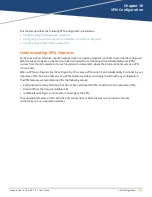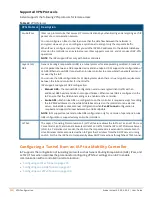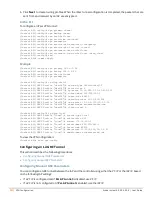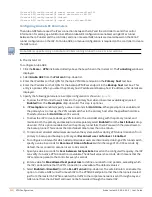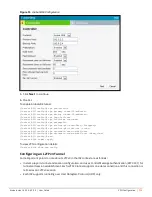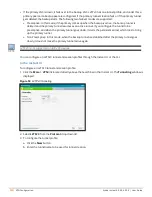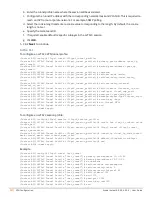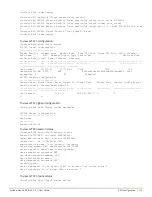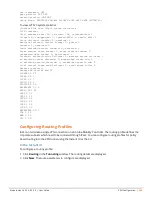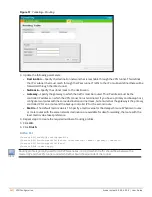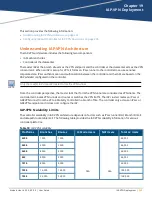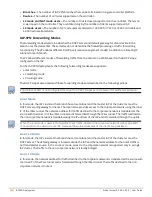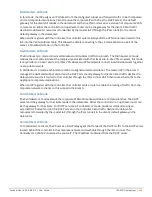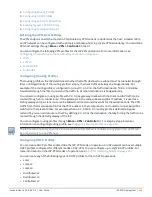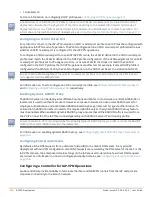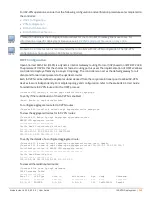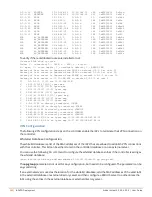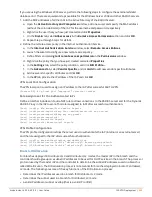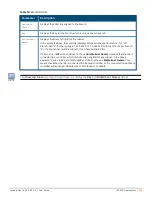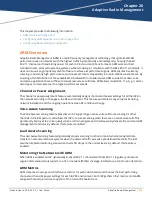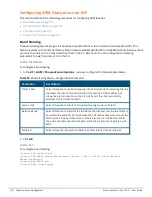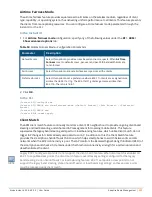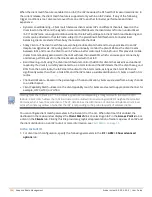
241
| VPN Configuration
Aruba Instant 6.5.0.0-4.3.0.0 | User Guide
Figure 57
Tunneling— Routing
3. Update the following parameters:
l
Destination
— Specify the destination network that is reachable through the VPN tunnel. This defines
the IP or subnet that must reach through the IPsec tunnel. Traffic to the IP or subnet defined here will be
forwarded through the IPsec tunnel.
l
Netmask
—Specify the subnet mask to the destination.
l
Gateway
—Specify the gateway to which the traffic must be routed. This IP address must be the
controller IP address on which the VPN connection is terminated. If you have a primary and backup host,
configure two routes with the same destination and netmask, but ensure that the gateway is the primary
controller IP for one route and the backup controller IP for the second route.
l
Metric
—The default metric value is 15. Specify a metric value for the datapath route. When two routes
or more routes with the same network destination are available for data forwarding, the route with the
least metric value takes preference.
4. Repeat step 3 to create the required number of routing profiles.
5. Click
OK
.
6. Click
Finish
.
In the CLI
(Instant AP)(config)# routing-profile
(Instant AP)(Routing-profile)# route <destination> <mask> <gateway> {<metric>}
(Instant AP)(Routing-profile)# end
(Instant AP)# commit apply
Routing profile is primarily used for IAP-VPN scenarios, to control which traffic should flow between the
master IAP and the VPN tunnel, and which traffic should flow outside of the tunnel.


